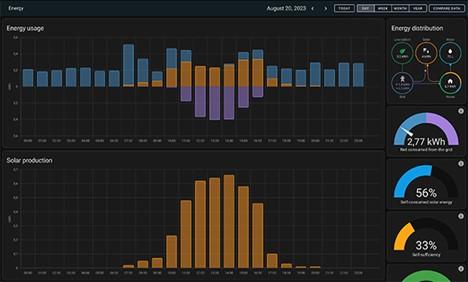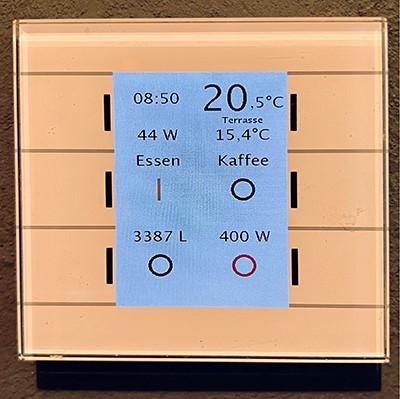29. Sep 2023
KNX Hackathon Finalist: Sharlynsland - a House where KNX, PV and Monitoring Result in Savings of 35%
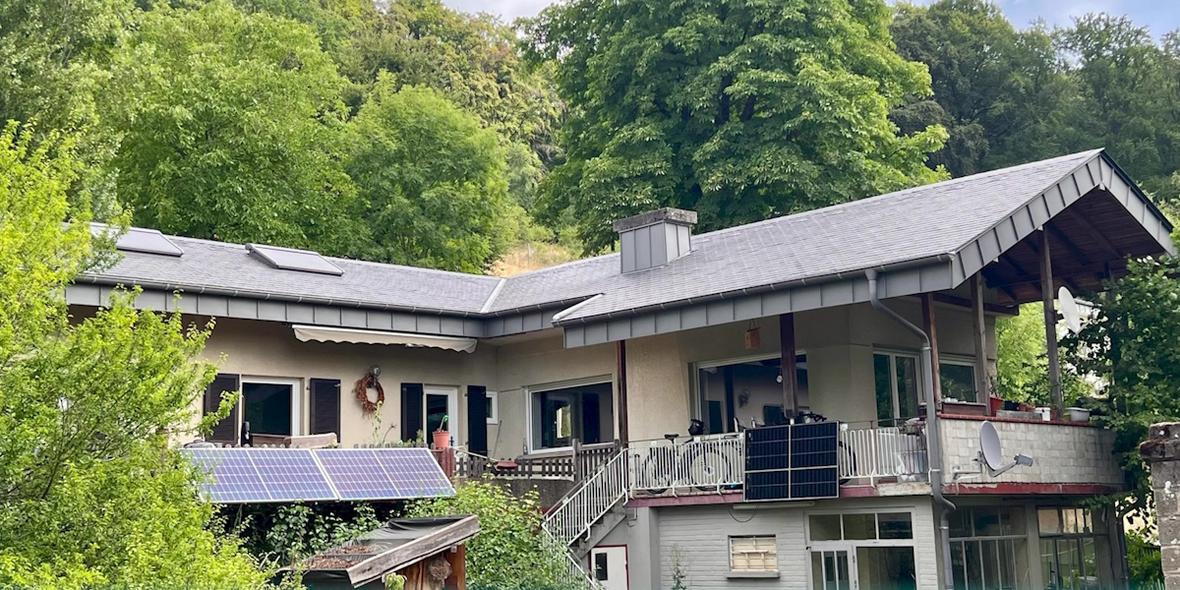
Lynn Bayer explains the lengths to which he and his wife have gone, in order to make their Luxembourg home efficient and eco-friendly, with typical energy savings of 35%.
In 2019, we began our mission of renovating a 60-year-old house to create a self-sufficient home.
This is a gradual process that involves monitoring and analysing our energy usage, integrating smart home technologies and using renewable energy sources such as solar panels.
A crucial part of this project was using KNX automation and monitoring systems to improve how we use energy.
The advantage of KNX
KNX technology plays a crucial role in this project. With a choice of over 8000 compatible products, KNX has allowed us to create a highly versatile and customised solution that perfectly fits our needs. Our aim was to measure and automate as much as possible, so we use presence detectors, switches with temperature sensing, door/windows contacts, energy meters and actuators with energy measurement. The key areas of automation on which we have focused are heating, lighting and shutters.
We first implemented standard automation such as light triggered by presence/absence, single-room temperature control, and automated shutters for cooling in summer and allowing in the warming sun in winter. This all significantly increased our comfort, but we had no before and after measurements, so it's hard to quantify the energy savings of this phase.
The KNX products we have employed include MDT Smart glass switches, presence detectors, binary detectors, various actuators and an energy meter; a Lingg & Janke water meter; and eVoKNX heating actuator; an Enertex Bayern KNX power supply; a Steinel True Presence detector; ESYLUX presence detectors; and a GVS Smart Touch switch.
Adding a photovoltaic system
By adding an 800W mini photovoltaic system, we can cover our basic household energy needs during the daytime in the summer and even generate surplus power for activities such as laundry or drying. An MDT display keeps us informed about our current energy generation, household consumption, and any energy being fed back into the grid.
Monitoring to know how much you use and save
Once we had implemented energy monitoring, using data from the KNX installation, we could see how much was being used and how much we were saving. The calculations, graphs and automations to save energy were done using Home Assistant, Node Red and PowerCalc. Home Assistant plays a crucial role as the brain of the house. It serves as the central hub that orchestrates and manages various smart devices and automation systems, bringing everything together seamlessly.
Home Assistant plays a crucial role as the brain of the house. It serves
as the central hub that orchestrates and manages various smart devices and
automation systems, bringing everything together seamlessly.
Image - Energie Monitoring - MiniPV - Visualisation showing energy production of the mini photovoltaic system (below) and household energy usage (above), during the course of the day.
The following are some numbers outlining the savings:
- In the past 2.5 years we have saved 100,000 litres of water using around 95% rain water and 5% well water. The consumption and purification are monitored by KNX. We decided against connecting the house to the water grid and saved €25,000 by investing €3500 in our water system.
- Our small 800W PV system produces 800kWh of power per year, and we self- consume 600kWh, which is 20% of our total consumption. The cost of the mini PV was 500€. The annual saving calculated at €0.25/kWh is €150, giving an ROI of 3.3 years, depending on the energy price.
- By analysing our energy consumption data, we saved another 144kWh and €36 through removing an un-used hard disk drive from the home network.
- Monitoring showed us that the old light bulbs in our kitchen were wasting the most energy, so we replaced them with LED lamps costing €9, saving us 220kWh/year and €57 - around 7% of our overall consumption in the kitchen alone, giving an ROI after 2 months.
Staying informed
We use an MDT KNX glass display/switch to show the actual electric energy consumption of the house.
With this small configuration we have become more aware of what we use. For example, at the beginning of last winter we noticed our basic electric power consumption had increased.
The answer was the water pumps for the heating system.
Additional savings
Our heating system works hand-in-hand with window contacts, adjusting automatically when windows are open and striking a balance between comfort and energy conservation. A geo-fence feature optimises temperature settings when we're away, saving energy without sacrificing comfort and taking advantage of calendar-based scheduling to further reduce temperature in our absence. At night, the system lowers the temperature, ensuring a restful sleep, and saving more energy.
The surplus energy generated by the PV system during the day is used to automate the dishwasher and washing machine. Even if we start these machines in the morning with limited energy, they only run if there is a predetermined amount of energy left.
I also have a traditional espresso machine which takes 20 minutes to warm up. Rather than working to a clock, since our children wake us at different times each day, the machine has been automated to switch on when I unplug my phone from the charger. When it is ready, I hear an announcement from the Sonos speakers, and 10 minutes later it gets switched off. The announcement and the turn-off automation also work if you turn it on manually via the KNX actuator. Whilst I’m not sure how much that saves on energy, in a previous home I had forgotten to switch the machine off for a whole weekend.
Conclusion
Monitoring electric consumption plays a key role in understanding energy usage. By analysing consumption patterns, we can identify areas to improve efficiency and make informed decisions on actions such as upgrading to more efficient appliances.
By continuously exploring and expanding our automation and monitoring capabilities, we have transformed our home into a smart and efficient living space. Since we live in a more eco-friendly way, our energy usage is already low, so any additional savings will not be as dramatic as for a household with high initial consumption, but according to the Internet, the average annual energy consumption for a four-person household in Luxembourg would be 4000kWh, whereas ours is 2600kWh, i.e. 35% lower.
Lynn Bayer is a consultant in renewable energy and energy management, and is also a KNX Partner.
Highlights
-
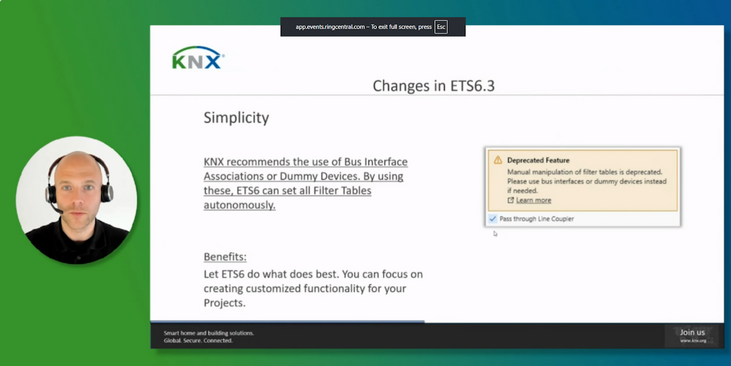 Press
PressETS6 Roadshow 2025 marks global success, showcases power of ETS6.3
ETS6 takes center stage during the month of May with 24 roadshow stops all over the world. -
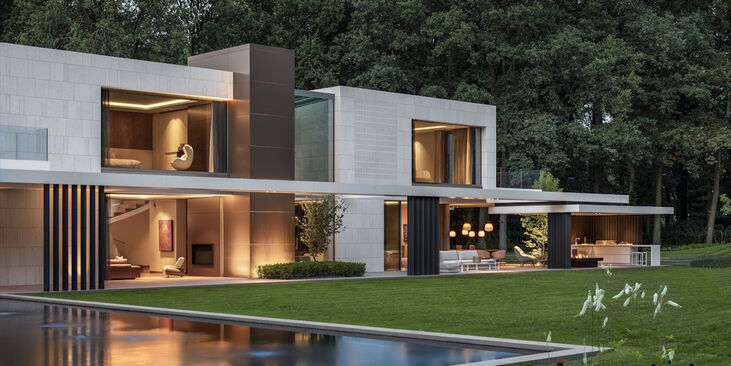 News
NewsThe KNX Journal 2025 is now available
The latest edition of our annual smart home and building solutions magazine has arrived. The KNX Journal 2025 offers ... -
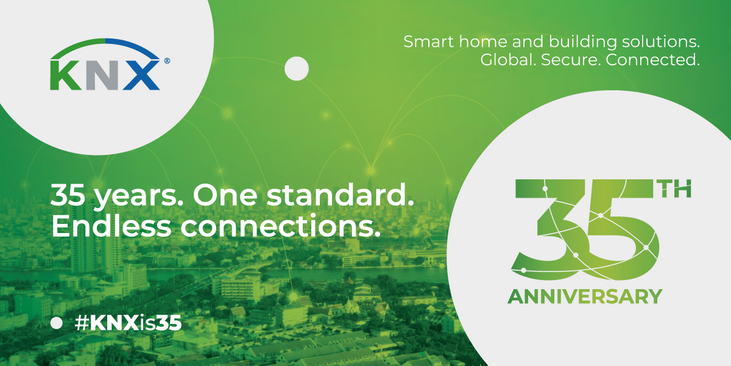 KNXtoday
KNXtoday#KNXis35: KNX history and evolution
KNX is 35. This worldwide building control standard, initiated by a handful of visionary European manufacturers, now has ...

